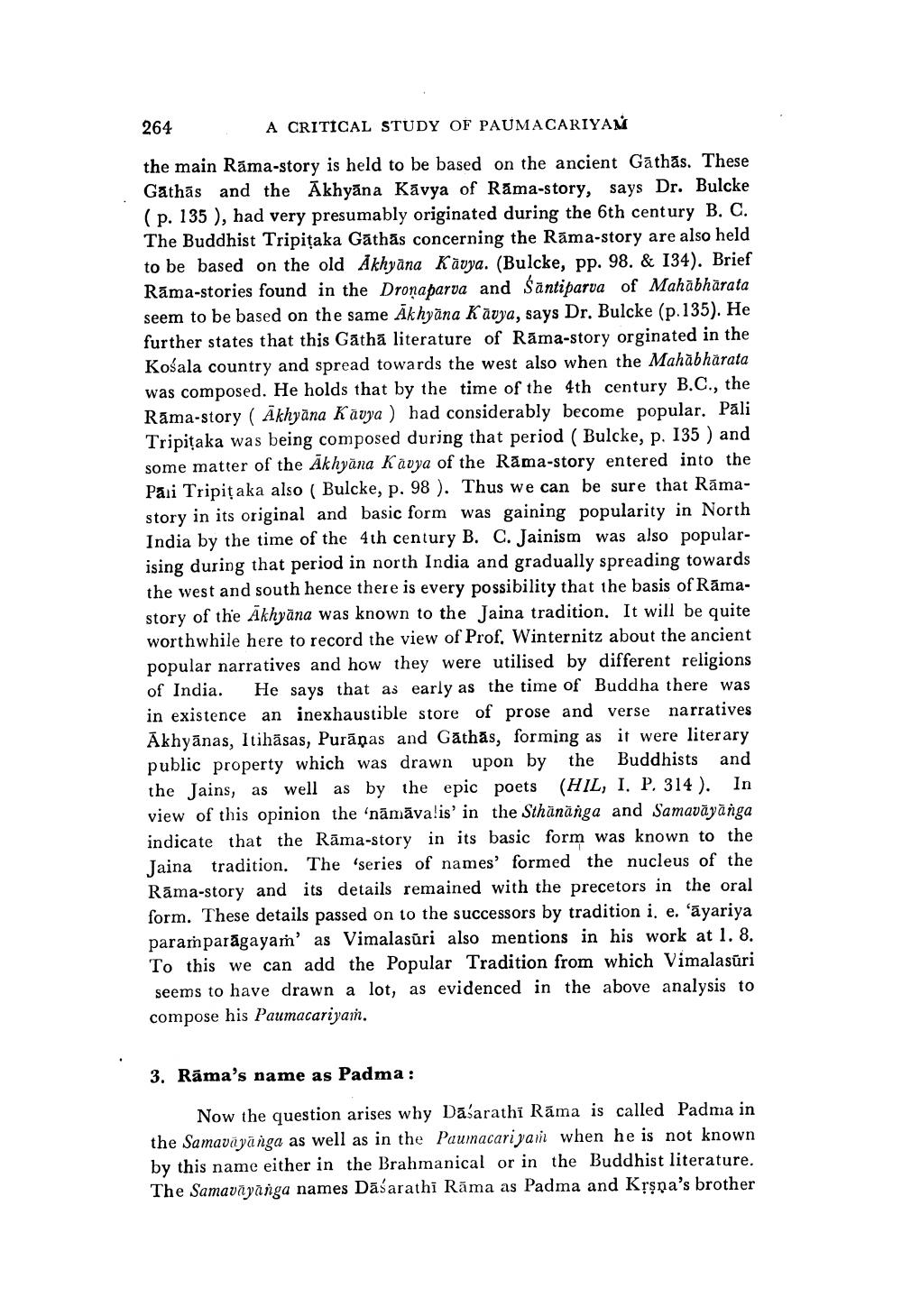________________
264
A CRITICAL STUDY OF PAUMACARIYAN the main Rāma-story is held to be based on the ancient Gāthās. These Gathās and the Akhyāna Kavya of Rama-story, says Dr. Bulcke (p. 135 ), had very presumably originated during the 6th century B. C. The Buddhist Tripitaka Gāthas concerning the Rāma-story are also held to be based on the old Akhyāna Kavya. (Bulcke, pp. 98. & 134). Brief Rāma-stories found in the Dronaparva and śāntiparva of Mahābhārata seem to be based on the same Akhyāna Kāvya, says Dr. Bulcke (p. 135). He further states that this Gāthā literature of Rāma-story orginated in the Košala country and spread towards the west also when the Mahabharata was composed. He holds that by the time of the 4th century B.C., the Rāma-story ( Ākhyāna Kavya ) had considerably become popular. Pali Tripitaka was being composed during that period (Bulcke, p. 135 ) and some matter of the Akhyana Kavya of the Rāma-story entered into the Paii Tripitaka also ( Bulcke, p. 98 ). Thus we can be sure that Rāmastory in its original and basic form was gaining popularity in North India by the time of the 4th century B. C. Jainism was also popularising during that period in north India and gradually spreading towards the west and south hence there is every possibility that the basis of Rāmastory of the Akhyāna was known to the Jaina tradition. It will be quite worthwhile here to record the view of Prof. Winternitz about the ancient popular narratives and how they were utilised by different religions of India. He says that as early as the time of Buddha there was in existence an inexhaustible store of prose and verse narratives Akhyānas, Itihāsas, Purānas and Gathas, forming as it were literary public property which was drawn upon by the Buddhists and the Jains, as well as by the epic poets (HIL, I. P. 314). In view of this opinion the 'nāmāvalis' in the Sthānanga and Samavāyānga indicate that the Rāma-story in its basic form was known to the Jaina tradition. The 'series of names' formed the nucleus of the Rāma-story and its details remained with the precetors in the oral form. These details passed on to the successors by tradition i. e. 'āyariya paramparāgayam' as Vimalasûri also mentions in his work at 1. 8. To this we can add the Popular Tradition from which Vimalasūri seems to have drawn a lot, as evidenced in the above analysis to compose his Paumacariyam.
3. Rāma's name as Padma :
N
....
Now the question arises why Dabarathi Rāma is called Padma in the Samavāyānga as well as in the Paumacari yam when he is not known by this name either in the Brahmanical or in the Buddhist literature. The Samavāyanga names Dāśarathi Rāma as Padma and Krşņa's brother




